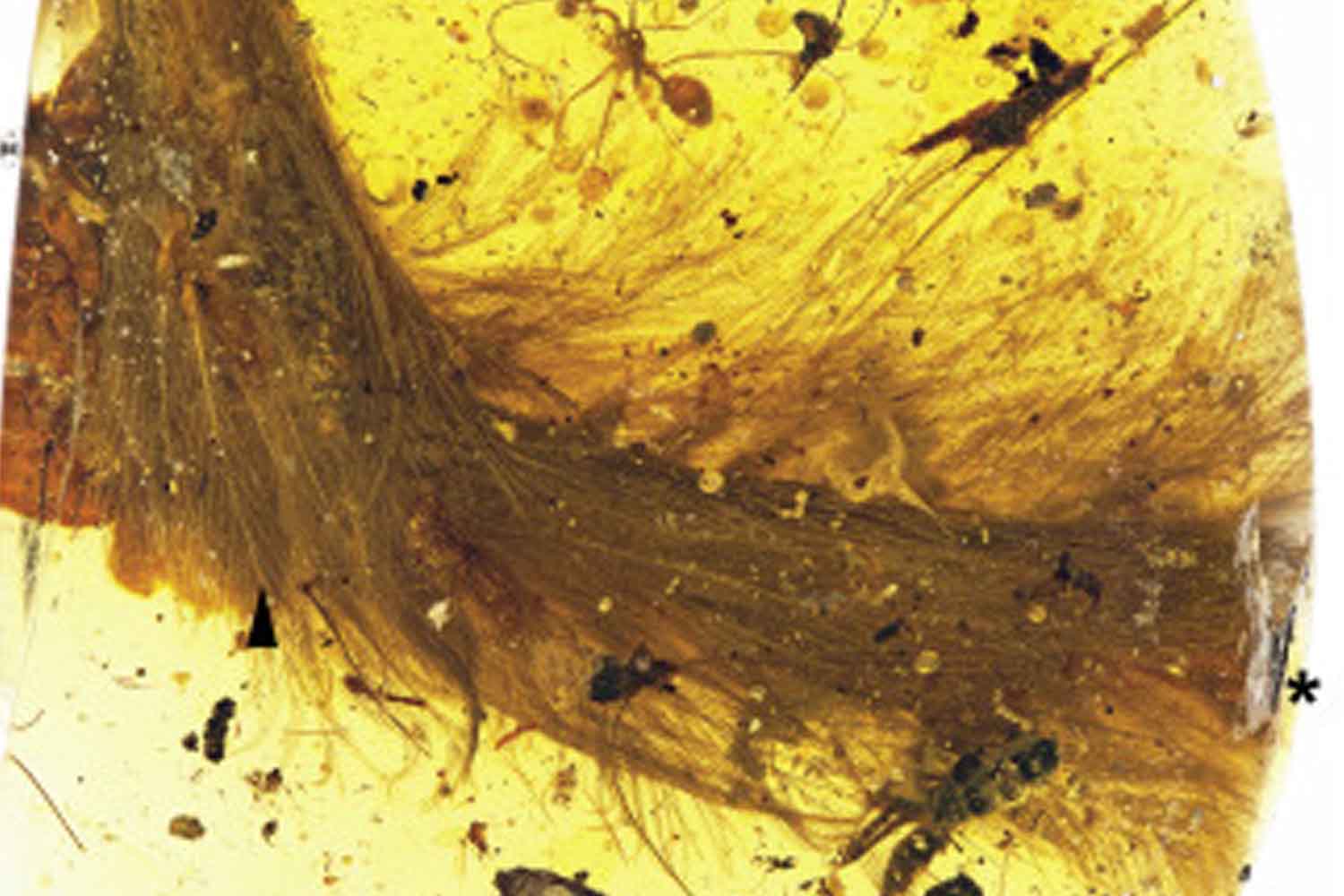In northern Myanmar, a piece of amber revealed a non-avian dinosaur tail: brown and white feathers, articulated vertebrae and blood traces remained intact for 99 million years

In an amber market in northern Myanmar, among stalls and stones destined for jewelry, a small fragment of resin became the protagonist of one of the most extraordinary discoveries of recent decades in the field of paleontology. What at first glance seemed like just a decorative stone actually contained the feathered tail of a young dinosaur, which remained trapped and fossilized in amber for 99 million years.
This unique finding was described by an international team of researchers, led by paleontologist Lida Xing, in a study published in 2016 in the journal Current Biology. The fossil — identified with the code DIP-V-15103 — is a true treasure for science: it contains eight articulated vertebrae, carbonized soft tissues and three-dimensional feathers, perfectly visible and preserved.
It’s not an ancient bird: it’s a young coelurosaur
Scholars confirmed that this is not a primitive bird, but a non-avian dinosaur, belonging to the group of Coelurosaurs, closely related to modern birds. The caudal vertebrae were still mobile and not fused, a sign that the specimen was young. The tail was covered with brown and white feathers, distributed in an orderly manner along its entire length.
The feathers, observed under a microscope and reconstructed in 3D, show a complex and branched structure, with thin rachises, well-developed barbs and barbules. They were not designed for flight, but probably served to retain heat or for visual communication, for example during courtship or to camouflage in the environment.
Traces of blood and preserved tissues
One of the most surprising aspects concerns the presence of soft tissues, visible in the form of carbonized films around the bones. Chemical analyses performed with Synchrotron Radiation X-ray and μCT scans detected the presence of ferrous iron (Fe²⁺), the same type of iron contained in hemoglobin.
This suggests that parts of the original blood may have remained trapped in the resin, along with muscles, ligaments and skin partially preserved. In practice, a natural time capsule, which has blocked for millions of years a precise moment in the evolutionary history of our planet.
Amber is mainly known for preserving insects and small plant fragments. But in exceptional cases, like this one, it can also protect complex vertebrates, offering a level of detail impossible to obtain in common rock fossils.
This discovery clearly shows that feathers were present even in non-flying dinosaurs, and that their initial function was not related to flight. The study supports the evolutionary hypothesis according to which feathers developed first for thermal insulation or communication, and only later adapted to flight in birds.
Thanks to the three-dimensional structure of feathers preserved in amber, it was also possible to analyze the arrangement of follicles and the way feathers were inserted into the skin. A detail that simply cannot be seen in flattened fossils.
Source: Current Biology
